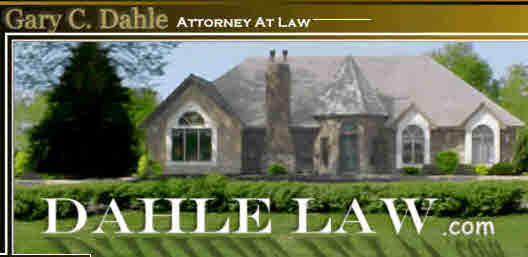“HOW THE FUR WILL FLY”
A STUDY OF AUGSBURG PROFESSOR SVEN OFTEDAL’S RESPONSE TO NORWEGIAN-AMERICAN LEADER RASMUS B. ANDERSON
By JAMES L. JOHNSON
2014
Reprinted by permission from the author.
Section Four – A KNOCK ON THE DOOR: A FAST FRIENDSHIP IN NORWAY
Anderson spent sixteen pages of his Life Story trying to demonstrate how he was on the right side and Oftedal on the other.
The friendship began on Anderson’s initial visit to Norway in 1872.
Early in the summer of that year, the young University of Wisconsin professor had a first visit with a tall, robust theologian with light brown locks and piercing eyes.
Anderson was lodging in Norway’s largest city, Christiania (Oslo), population 65,000 at the time, not far from the University of Christiania (Oslo).
It was there he received a visit from a gregarious Sven Oftedal, who wanted to talk to him about America.
Oftedal was the brother of the well-known pastor and politician, Lars Oftedal from Stavanger, home of Anderson’s forbears.
The two hit it off quickly.
They talked politics, traveled the country, discussed Norwegian culture, and introduced each other to their growing circle of friends.
They talked of how exciting it would be to work together in America.
“Your deep interest in the Norwegian people and in the Norwegian spirit has bound me to you,” Oftedal wrote Anderson a few months after their meeting in a letter dated Nov. 20, 1872.
Oftedal wrote Anderson a few months after their meeting in 1872: “When you and I shall fight side by side in America how the fur will fly.” (40)
Oftedal soon introduced Anderson to two of his close Christian friends from the university.
Georg Sverdrup, twenty-four, had achieved status as a top scholar in his class, and Sven Gunnersen, twenty-eight, had become the H.K.H. Crown Prince gold medal winner for his dissertation the previous year in 1871. (41)
The three of them gathered at the Gunnersen home on several occasions.
The scholars discussed the dream of the three recent graduates to go to America and find work among their countrymen.
Anderson told the trio he would keep his “eyes open.”
Meanwhile, Anderson urged all three to write for the Chicago-based newspaper, Amerika, in order to become better known among Norwegian immigrants in the new country.
Oftedal spent the following winter in Paris and sent stories to Amerika.
Gunnersen sent articles from Norway.
Sverdrup sent private letters to Anderson in Madison to stay in touch. (42)
Anderson reconnected with the scholar from Stavanger in the summer of 1873 when he returned to Norway to promote another tour for Bull and Bjørnson.
When the tour came to Stavanger, Anderson scored two tickets and delivered it at the home of Oftedal’s father, Svend, so Oftedal and his fiancé could hear the maestro in person. (43)
He also set up a brief meeting for Oftedal with Bjørnson, the large and loud poet with the personality and lion’s-mane hairstyle of American writer Mark Twain.
Anderson linked up the two on a twenty-seven-mile ride from Drammen to Krodern.
After the quick kibbutz, the lion-maned novelist expressed caution about the outgoing theologian.
“Bjørnson advised me not to put too much faith in that fellow,” Anderson wrote.
“He thought him ‘foxy.’” (44)
Anderson took Bjornson’s premonitions with a grain of salt.
He hoped the gifted Oftedal could write for Amerika, the Madison-based newspaper operated by his friend, John Johnson.
On his way back to Wisconsin, the professor stopped for an hour at the port in Stavanger to touch base with Oftedal, who had just been married to Maria Gjertsen.
Anderson was pleased to meet Oftedal’s new bride and gave Maria a “sovereign” coin for a present.
In return for the wedding gift, Oftedal gave Anderson the good news: He had just accepted a position to teach at Augsburg Seminary in Minneapolis and would be leaving by mid-fall, hoping to start teaching in January.
Anderson invited them to stop in Madison for a few days.
The Oftedals accepted.
After arriving in the United States, the new couple stopped at the Anderson home with their housemaid for a few days.
During the visit, “We mapped out a campaign for work,” said Anderson, discussing “the situation” among Norwegians “from Dan to Beersheba.” (45)
NOTES
- Lloyd Hustvedt, “Rasmus Bjorn Anderson, Pioneer Scholar, Authors Series, Volume 2,” n.p. [cited 3 May 2014]. Online:
http://archiver.rootsweb.ancestry.com/th/read/NORWAY/2004-06/1087665707 - Ibid., 169.
- “Sven Rudolph Gundersen” http://no.wikipedia.org/wiki/Sven_Rudolf_Gundersen (accessed April 26, 2014). August Weenaas in Livserindringer fra norge og America explains that Sven Rudolf Gundersen changed his name to “Sven Rud Gunnersen” when he came to Minneapolis in 1874. However, Anderson puts an extra “u” in “Ruud” and retains the Norwegian spelling of his surname “Gundersen.”
- Anderson, 164.
- Ibid., 166.
- Ibid., 166
- Ibid., 166-167.
